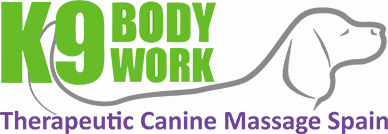Massage Therapy for Dogs
Therapeutic canine massage is a science based complementary therapy that rehabilitates muscular injuries and provides pain management for orthopaedic conditions. I’ve heard many people say they massage their dog at home and whilst that can be a great bonding excersise it’s a million miles away from a professional massage.
When you book a massage for you dog you’re spending time and money so need to make sure the treatment meets your expectations and helps your dog. You need a massage therapist who understands the proper techniques so your dog’s safe and any issues they have are resolved. A qualified canine massage therapist understands how the dog’s body works and moves and they use that knowledge to tailor each and every massage to your dogs specific issues.To do this they need to have studied CANINE anatomy.
Treating a dog is a million miles away from treating a person, they can’t talk and tell you where the pain is or what if feels like when you put pressure on a certain area. You can’t explain to a dog why they need to lie still and why they may be feeling a slight discomfort. A canine massage therapist has to be able to work all of this out by using their palpation skills and their advanced knowledge about canine anatomy, they need to know which areas of a dog frequently pick up muscular injuries. Theses things can’t be learnt in a humna massage course.
A qualified canine massage therapist should have studied
- Advanced Canine Anatomy and Physiology with particular emphasis on the musculo skeletal system.
- Advanced Palpation Skills.
- 4 Disciplines of Massage<Swedish, Sports, Myofascial Release and Deep Tissue.
- Working Safe and Best Practice.
- Understanding Orthopaedic Conditions.
- Common Pathologies e.g. TPLO Surgery, Spondylosis, Intervertebral Disk Disease.
Memebers of the Canine Massage Guild we also have to complete a minimum of 30 hours of Continued Professional Development each year that has to be certified.
Different modalities aim to achieve different results. trained in dealing with injuries or reducing recovery time. Unlike canine physiotherapy which strengthes muscles canine massage lengthes and softens the muscles.
You’re putting the well being of your dog in their hands so never be afraid to ask to see someone’s qualifications and insurance and make sure the qualification actually qualifies the therapist to treat dogs not just humans. Massage carried out by someone not qualified to treat the client can do more harm than good.
